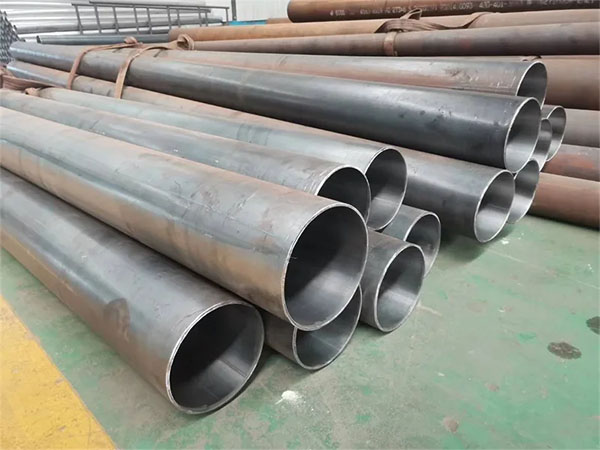Schedule 40 ERW carbon steel pipe is a medium wall thickness carbon steel pipe produced based on ERW (Electric Resistance Welded) in accordance with ANSI/ASME B36.10M "Schedule 40" standard. It combines the economic advantage of efficient welding of ERW pipes with the strength and pressure resistance of Schedule 40 wall thickness, and is widely used in construction, support, pipe galleries and light conveying systems.
The main features of Schedule 40 ERW carbon steel pipes
Wall thickness standard: Schedule 40. The correspondence between the outer diameter and size of the pipe follows ASME B36.10M and is suitable for medium and low pressure applications.
Materials: The materials are mainly low-carbon steel or medium-carbon steel, which have good toughness and processing performance.
Strength: It has excellent strength and toughness, capable of withstanding moderate external forces and pressures.
Corrosion resistance: The overall corrosion resistance of the steel pipe can be enhanced through anti-corrosion measures such as galvanizing, applying anti-corrosion coatings, and painting.
Production process: ERW pipes are cold-formed from steel strips or steel coils, then the longitudinal welds are welded by high-frequency resistance welding, followed by sizing, straightening and polishing treatments. Modern processes mostly employ high-frequency ERW to reduce weld defects and enhance production efficiency. The main steps are: uncoiling → leveling → roll forming → high-frequency welding → sizing and straightening → cutting and inspection.
Size: Available in various sizes and lengths, it can meet the needs of different situations.

The main parameter requirements of Schedule 40
Nominal dimensions (NPS/OD) : ½ "- 24" (21.3 mm - 609.6 mm).
Material standards: Commonly used are international standards such as ASTM A53/A106/API 5L, and Type E/F Grade B carbon steel ERW pipe is the most common.
Typical chemical composition (taking ASTM A53 Grade B as an example) : Carbon (C) : 0.25-0.30%; Manganese (Mn) : 0.95-1.20% Phosphorus (P) : ≤0.05% Sulfur (S) : ≤0.045%.
Typical applications of 40 ERW carbon steel pipes in Schedule
Water supply and drainage pipes: They are mostly used in the cold and hot water as well as drainage systems of residential buildings and structures.
Low-pressure natural gas and oil pipelines: The common type is API 5L, which is used for the transportation of low-pressure natural gas and oil.
Structural supports: Used in scenarios such as scaffolding, steel structure pillars, and guardrails.
Fire sprinkler system: Complies with UL and FM certifications and can be used for commercial and industrial fire sprinkler pipes.
Advantages and precautions of ERW carbon steel pipes
Advantages: Low cost, high output, uniform surface, strong dimensional consistency, the quality and strength of the weld seam are close to the base material, and it is often used in medium and low pressure environments.
Compared with seamless pipes, ERW welded pipes have lower performance in high-pressure and low-temperature environments. During transportation and storage, they should be kept away from damp conditions to prevent surface rusting.
Summary
ERW Carbon Steel Pipe Schedule 40 dominates in the fields of water supply and drainage, gas transportation, medium and low pressure pipeline systems and structural support with its advantages of standardized wall thickness, excellent mechanical properties and economic efficiency.
